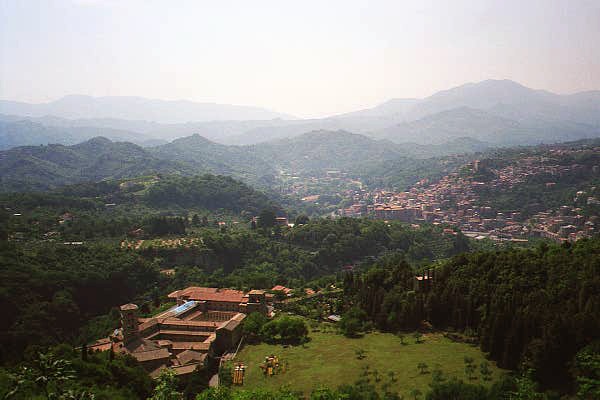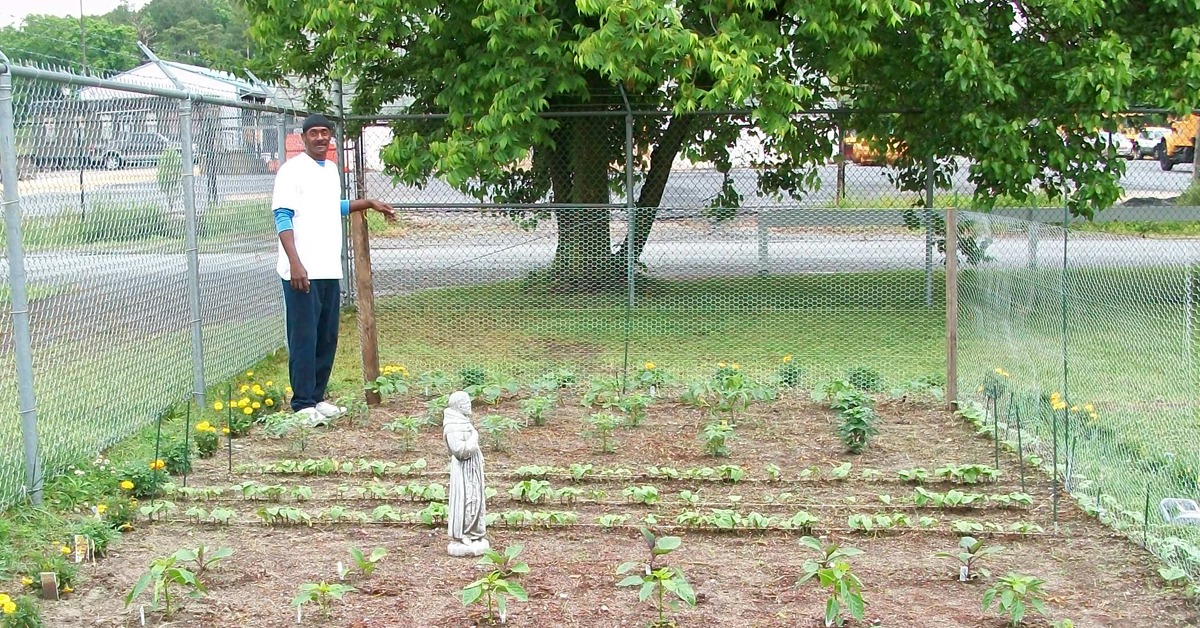Newsletter: April 2024

Dear Friends of Joseph House:
The fair season of spring has arrived, and on the Eastern Shore the days feel fresh and full of possibilities.
Soon enough the humidity and mosquitoes will come, but for now going outside is pleasant, and we enjoy spending a quiet moment to look at the blossoms in our convent garden. Our little patch of earth is always a work in progress, which is true for every garden — in fact, it’s true for each of us as well. A garden is never finished and neither are we. To live is to change, and if physically we seem to diminish as we grow older, our interior life can reach new heights at any age. Take a look inside with a gardener’s eye: a little effort and guidance can make what is there beautiful, while neglect leads to ruin.
In his Dialogues, St. Gregory likened St. Benedict to “a piece of ground well tilled and weeded.” That’s an edifying image; it describes someone who knew how to bring forth the immeasurable goodness of being human.
As a plow breaks open the earth and makes it ready to receive seeds and rain, for us to be “well tilled” means we need to guard against hardness of heart. Pride and selfishness can make us impervious to God’s grace and to hearing the cries of the poor. And then there are the “weeds” of sin and vice and worldly concerns that take the place of the Gospel in our lives. They need to be pulled up by their roots, not once, but over and over again, just like gardening out in the yard. Conversion is a life-long process.
Our ministry to the poor at the Joseph House demands that we bring our best selves to the work at hand. The way to do this is by making room for God’s action in our lives, by being, like St. Benedict, “well tilled and weeded” ourselves. Only then can we truly be a caring presence to people facing adversity.
Marie, 75, was a recent visitor to the Joseph House Crisis Center. In failing health, she is trying to make it on her own now that her husband is in jail for abusing her. The electricity was turned off in her home, and Marie was mostly worried about her food spoiling. She could only pay a small amount toward the overdue bill of $962. Thankfully, we were able to contribute a total of $800.
Destiny, 49, has crippling pain from arthritis in her back and knees. Her disability claim is under review. In the meantime, she is receiving temporary benefits of $328 monthly, an amount that promises destitution. We paid her overdue electric bill of $324.
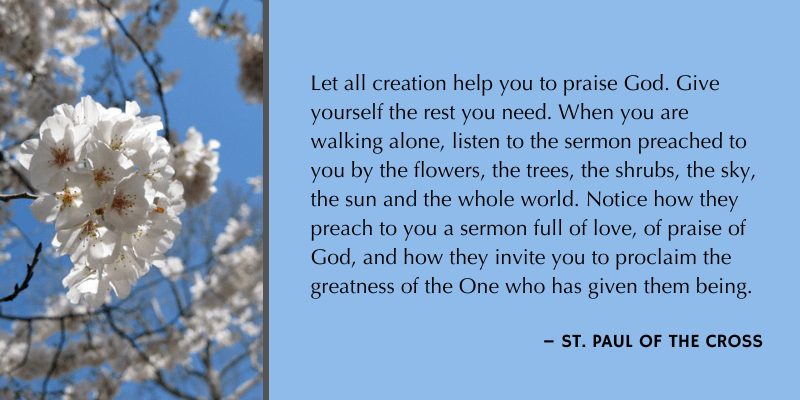
Kendra, 32, and her two young children have been homeless for more than a year, going from shelter to shelter. After qualifying for public assistance, Kendra found a landlord willing to rent to her provided she get the utilities turned on. The problem, however, was an old unpaid electric bill of $421 in her name. Her check did not provide enough funds to clear that up, but we were able to help with $300. Kendra and her children now have stable housing, the foundation for employment and family life.
Elaina, 45, has an even bigger debt that is dragging her down: she owes $1,000 in late fees for rent. Despite working full-time (retail), she can never get caught up. Elaina had to supply her own refrigerator when she moved in, an outrageous burden for someone with a low income. There were other places she could have moved into, but they come with higher rents. For the poor, it’s always a no-win situation. We sent $350 to her landlord, enough to halt the current eviction proceedings. Elaina is looking for a second job.
Jennifer, 59, has suffered a great deal of abuse in her life. Her mounting health problems have made her increasingly dependent on using a wheelchair. Jennifer received a subsidized housing voucher to move into a wheelchair-accessible apartment, but needed to pay the first month’s rent and security deposit in advance. That was too much for her Social Security check, so we contributed $800.
Linda, 53, became homeless after the sudden death of her daughter. Bit by bit she’s pulling her life back together. She started cleaning houses to earn money and moved into an apartment. The subsidized rent is a lifesaver because sometimes Linda only makes about $350 a month. To keep the power from being turned off, we paid the overdue electric bill of $245.
One could say that no matter how old we are, our souls exist in a state of eternal spring: the potential is always there for renewal and rebirth. May we never stop growing in our capacity to love one another.
Thank you for your continued interest in the Joseph House and for all the ways you show your support. We appreciate it very much and remember you every day in our prayers.
Your Little Sisters of Jesus and Mary
Please send us your prayer requests and we will lift them up to the Lord: Contact Form
The Joseph House depends on your support to help your neighbors in need: Donate
Web Extra
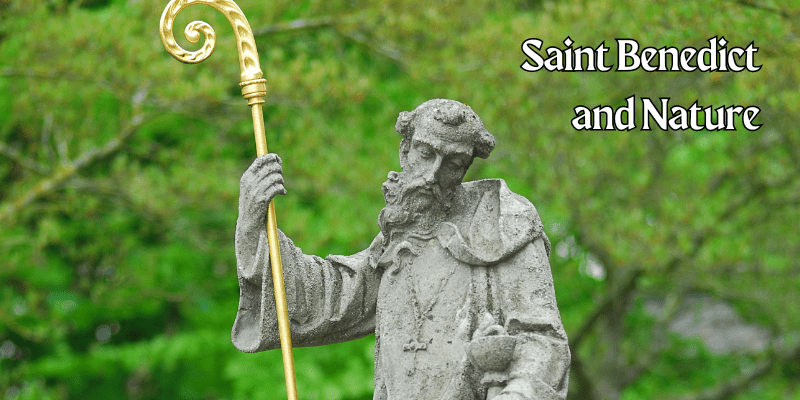
“Gregory wrote the Dialogues in a time of instability and its attendant chaos. His primary purpose was to strengthen and inspire the Christian people of Italy with the lives of women and men marked by heroic virtue. Writing as a monastic bishop, the devotion of one entire book to the life and wondrous signs of Benedict highlighted that for which many yearned: a sense of stability and the knowledge that God was continuing to act in the present as God had acted in the past — a past revealed in the prophets of the Hebrew and Christian Scriptures.
“From this perspective, Gregory invited his readers to recognize the topography of central Italy as another ‘holy land’ not unlike the land in which God was present to Elijah, Elisha, Jeremiah, John the Baptist, and Jesus, through whom God performed wondrous signs. Let us hold those two together — holy and land.
“At the same time, Gregory included sufficient references concerning the valley to construct the natural environment in which the young Benedict received his calling to monastic life. Rather than let the land and water, the flora and stone simply disappear, we can see Benedict within his natural environment rather than above and beyond it and, in doing so, recognize the integral role this distinctive habitat played in his life as a hermit and monastic leader. Read carefully, Gregory’s narrative reveals a consistent and harmonious interaction between the young ascetic and the distinctive ecology of the Subiaco Valley.
“In an essay published in 1974, the microbiologist and environmentalist Rene Dubos suggested that Benedict ought to be viewed as the great patron of care for the earth: ‘Benedict can be regarded as patron saint of those who believe that true conservation means not only protecting nature against human misbehavior but also developing human activities which favor a creative, harmonious relationship between man [sic] and nature.’ *
“Benedict lived in harmony with the creation and ensured that his disciples — marked by moderation in all things — would engage the soil and water with respect and welcome the gifts of nature into their worship, study, labor, and buildings.”
*Rene Dubos, “Franciscan Conservation versus Benedictine Stewardship,” in Ecology and Religion in History, ed. David and Eileen Spring (New York: Harper & Row, 1974), 130-31.
Excerpt from Samuel Torvend. Monastic Ecological Wisdom: A Living Tradition. Collegeville, MN: Liturgical Press, 2023.
The two photos below show the landscape in which Benedict lived. The first photo shows the Monastery of St. Benedict in Subiaco, Italy, about 45 miles east of Rome. It is built into a rocky hillside.
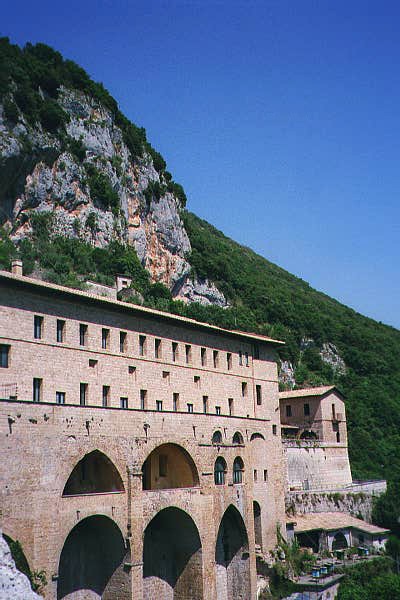
The second photo shows the nearby Abbey of St. Scholastica.
